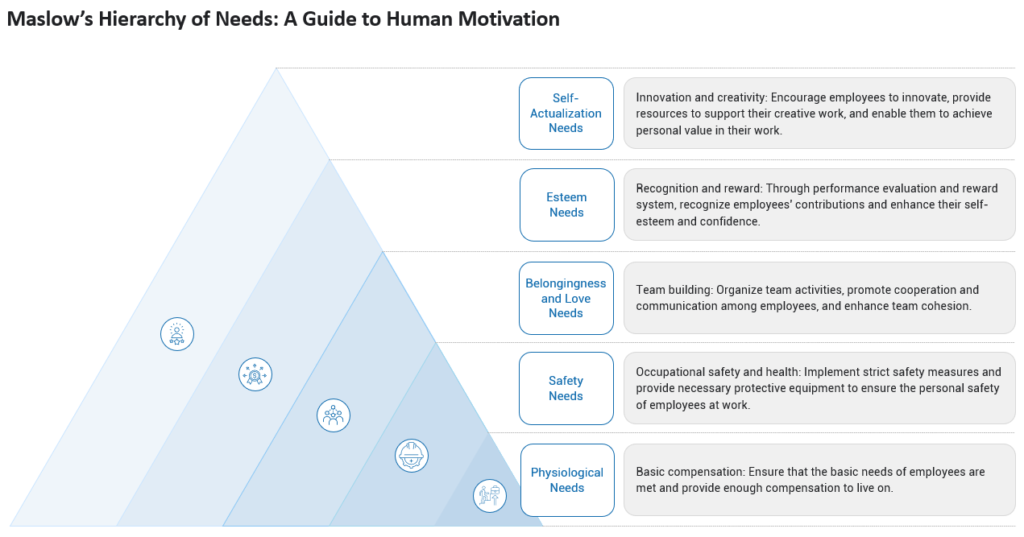Overview: What is Maslow’s Hierarchy of Needs?
The Maslow Demand Level Model, also known as Maslow’s Hierarchy of Needs, is a psychological theory created by Abraham Maslow in 1943. It is one of the most famous models in psychology and helps us understand what motivates people.
Maslow created this model while working as a psychologist.
He wanted to understand what drives people beyond just basic survival. He studied successful people like Albert Einstein and used ideas from humanistic psychology, which focuses on personal growth and reaching one’s potential.
The model shows a pyramid of human needs, starting with the most basic needs and moving up to higher-level needs, ending with self-fulfillment.
Core Concept: The Hierarchy of Human Needs
The main idea of Maslow’s model is that human needs are structured like a pyramid, with lower-level needs needing to be met before higher-level needs can be focused on. The hierarchy has five levels:
- Physiological Needs: Basic needs like food, water, sleep, and shelter.
- Safety Needs: Feeling safe, having financial security, and stability.
- Social Needs: The need for love, belonging, friendships, and social connections.
- Esteem Needs: Respect from others, self-esteem, recognition, and achievement.
- Self-Actualization Needs: The desire to reach one’s full potential, personal growth, and fulfillment.
Key Features of Maslow’s Hierarchy

Maslow’s Hierarchy of Needs shows that while needs are often met in a specific order, this sequence is not always strict. Here are some features help you understand this model better.
People might skip levels or jump to higher needs without fulfilling every lower one. The hierarchy is just a structure after all.
Individuals can be motivated by multiple needs simultaneously, and even when focusing on basic needs, they may still aim for higher-level goals.
Even within the same level, needs can vary greatly between people. For example, for social needs, some people may only need a few close friends, while others may desire a large social circle.
Maslow’s Hierarchy for Team Building
In team management, Maslow’s model can help create an environment that meets different employee needs.
Basic Needs (Security)
Team members need to feel safe and secure in their roles. Provide clear expectations and a healthy team culture.
Belonging Needs (Community)
Team members need to feel a sense of connection and camaraderie. Promote open communication and regular team-building activities.
Esteem Needs (Recognition)
Team members need to feel valued, appreciated, and respected. Acknowledge individual and team wins. Offer constructive feedback. Some frameworks, such as Radical Candor, SBI Model, and COIN Model will help here.
Growth Needs (Development)
Team members need opportunities for personal and professional growth. Provide training programs & offer mentorship opportunities.
Self-Actualization (Purpose)
Team members need to feel a sense of purpose and creativity in their work. Encourage innovative projects & align team goals with personal values.
Practical Applications
Marketing
In marketing, Maslow’s model helps understand what customers want. Marketers can design their messages to appeal to specific needs.
For example, ads that highlight safety features target people’s safety needs, while luxury products focus on esteem needs by promising status and exclusivity.
Product Development
In product development, companies can use this model to decide which features to add. Basic features meet physiological needs, while security features meet safety needs. Social features, like sharing options, can meet social needs.
Unlock all frameworks and templates
Unlock exclusive thinking frameworks and practice templates.
Become a member to access all premium content to elevate your thinking!
Template for Practice
Turn theory into action with our Maslow’s Hierarchy template.

Available in the Templates
Available in Templates to download the resource.

